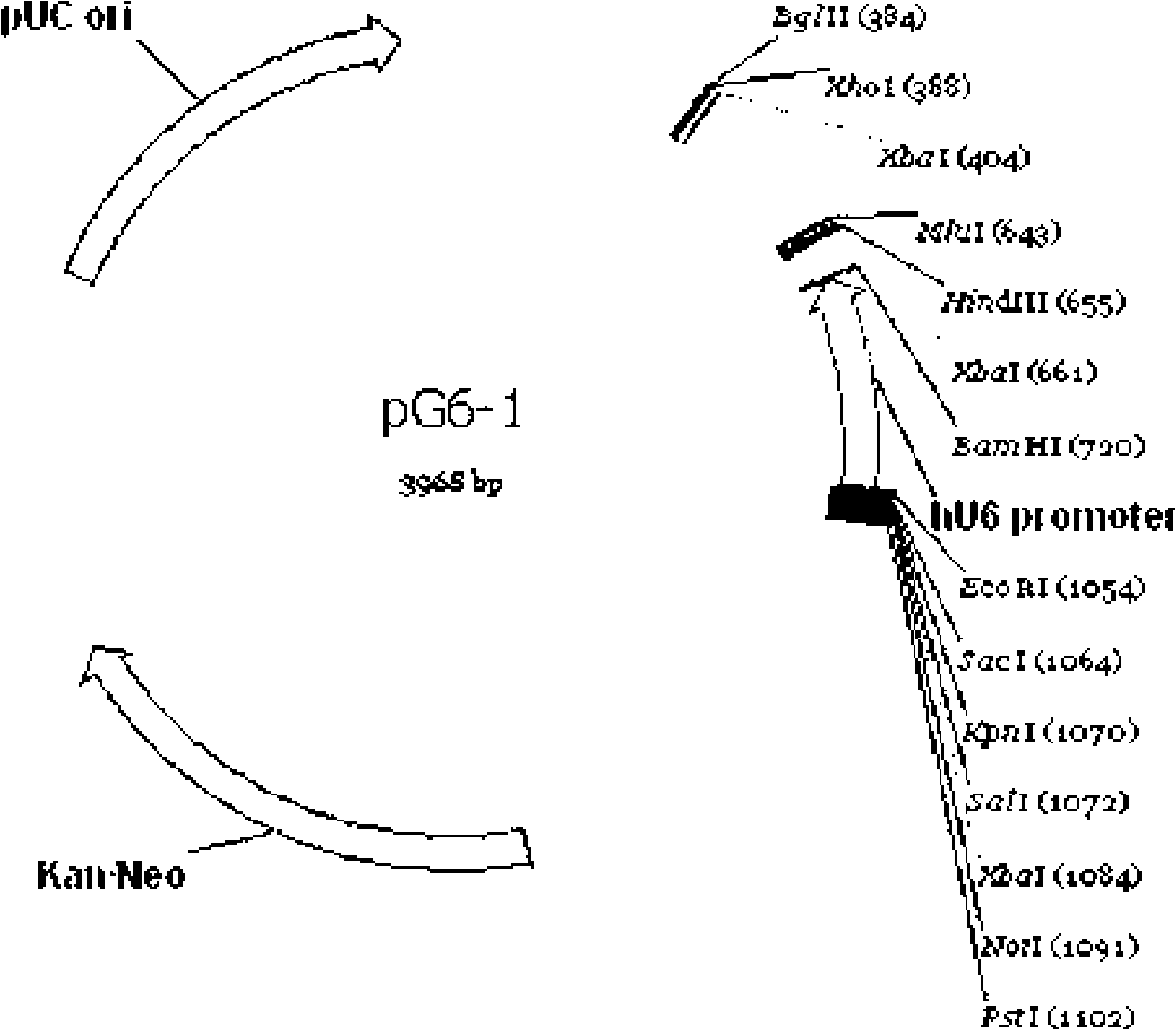RNA interference expression plasmid- cationic liposome-heparin antineoplastic complexes targeting human FAK and PLK1 gene
A technology of liposome complexes and cationic liposomes, which is applied in the direction of DNA / RNA fragments, antineoplastic drugs, liposome delivery, etc., can solve the problems of large amount of siRNA, poor quality of life of patients, and not very ideal , to achieve suitable for clinical use, long-lasting in vivo action time, good effect
- Summary
- Abstract
- Description
- Claims
- Application Information
AI Technical Summary
Problems solved by technology
Method used
Image
Examples
Embodiment 1
[0034] Example 1 Construction of an shRNA expression plasmid targeting both FAK and PLK1 genes
[0035] Select the siRNA target sequence (SEQ ID NO.1) on the human FAK gene that can significantly inhibit the expression of the gene: 5'-AACCACCTGGGCCAGTATTAT- 3' (human FAK: GenBank accession no: NM_153831) and the human PLK1 gene that can significantly inhibit The siRNA target sequence (SEQ ID NO.2) for inhibiting the expression of this gene: 5'-CCTTGATGAAGAAGATCAC-3' (human PLK1: GenBank accession no: NM_005030).
[0036] The construction process of the shRNA plasmid expression vector expressing the double-gene RNA interference sequence is as follows:
[0037] 1. Design and synthesize the RNA interference expression framework according to the following structure
[0038] Express frame structure:
[0039] (wherein Loop refers to the connection sequence).
[0040] (1) The RNA interference target sequence of the FAK gene is:
[0041] 5'-AACCACCTGGGCCAGTATTAT-3'
[0042] Syn...
Embodiment 2
[0070] Embodiment two, the preparation of plasmid DNA-cationic liposome-heparin complex
[0071] 1. Preparation of DOTAP-Chol cationic liposomes
[0072] The cationic liposome DOTAP was mixed with the neutral component cholesterol (Chol) at a molar ratio of 1:1, and the mixture was dissolved with HPLC grade chloroform, and placed on a rotary evaporator at 40°C for 1 hour to rotate Form a film and dry overnight in vacuum. The formed film was taken out and dissolved in 5% glucose solution, then shaken in a water bath at 55°C for 1 hour, transferred the mixture to a test tube, and squeezed 3 times through a 220nm polycarbonate film, and finally dissolved the mixture In a 5% glucose solution, a 5 mg / ml DOTAP-Chol cationic liposome suspension was obtained.
[0073] 2. Preparation of pGen-(FAK+PLK1) plasmid DNA
[0074] The pGen-(FAK+PLK1) plasmid DNA constructed in the high-purity embodiment 1 was produced in a pilot scale using the bacteria high-density fermenter of 50L and the...
PUM
 Login to View More
Login to View More Abstract
Description
Claims
Application Information
 Login to View More
Login to View More - R&D
- Intellectual Property
- Life Sciences
- Materials
- Tech Scout
- Unparalleled Data Quality
- Higher Quality Content
- 60% Fewer Hallucinations
Browse by: Latest US Patents, China's latest patents, Technical Efficacy Thesaurus, Application Domain, Technology Topic, Popular Technical Reports.
© 2025 PatSnap. All rights reserved.Legal|Privacy policy|Modern Slavery Act Transparency Statement|Sitemap|About US| Contact US: help@patsnap.com



